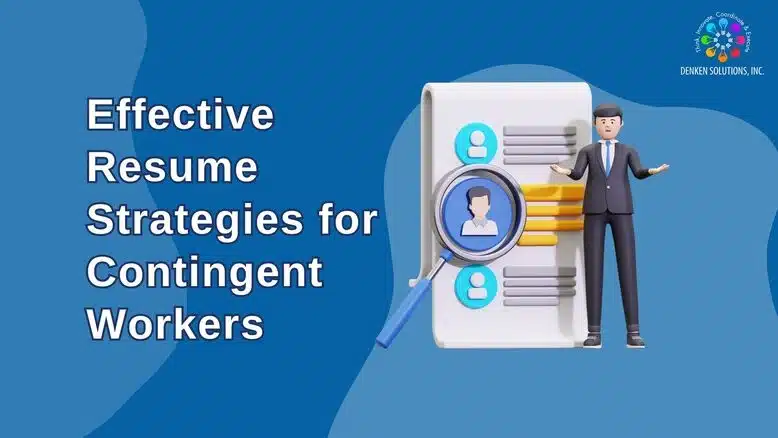Best Practices for Retaining Contingent Workers: Strategies for Engagement and Loyalty
This article outlines contingent workforce management best practices to help businesses retain top talent.
Today’s dynamic business environment is shaped by macroeconomic factors and technological innovation, making contingent workers a crucial part of the workforce. These professionals bring unique skills and expertise, often playing a key role in project success. However, retaining valuable contingent workers—especially during peak staffing seasons—presents challenges for employers.
With the gig economy’s rapid growth, businesses must develop effective retention strategies to ensure the stability of their contingent workforce. This article outlines data-backed best practices for keeping contingent workers engaged and motivated.
Proven Contingent Workforce Retention Strategies
Here are key employee retention strategies designed to boost engagement and maintain a high-quality contingent workforce. Employers implementing contingent workforce management best practices see improved retention and engagement.
Transparent and Consistent Communication
A key part of contingent workforce best practices is ensuring clear and open communication.Effective communication is vital for fostering a positive work relationship with contingent employees. Companies should leverage virtual tools and collaboration platforms to maintain transparency, especially for remote teams.
Best Practices:
- Provide clear guidelines on project objectives, deadlines, and KPIs.
- Offer regular feedback loops to address concerns and enhance engagement.
- Use platforms like Slack, Microsoft Teams, or Zoom to facilitate seamless collaboration.
According to a 2023 report by Deloitte, organizations with strong communication frameworks see a 30% improvement in contingent worker satisfaction.
Competitive Compensation and Benefits
One effective method for motivating contingent workers is offering competitive incentives and perks.A significant reason for disengagement among contingent workers is the lack of financial incentives and perks typically offered to full-time employees.
Best Practices:
- Offer performance-based incentives, bonuses, or project completion rewards.
- Provide flexible payment structures, including milestone-based pay.
- Consider stipends for professional development to enhance skills.
Example: Google offers contractor wellness programs and learning stipends, ensuring contingent staff feel valued.
Legal Consideration: In the U.S., contingent workers may not be eligible for traditional benefits under labor laws. Instead, companies can offer stipends or voluntary benefit programs to provide added value.
Foster a Sense of Belonging
Excluding contingent workers from company culture can lead to disengagement. Companies should actively integrate them into team dynamics.
Best Practices:
- Invite contingent staff to team meetings, networking events, and training programs.
- Assign mentors or team buddies to facilitate integration.
- Create cross-functional teams where contingent and full-time employees collaborate.
A 2022 McKinsey study found that companies with inclusive work cultures see a 25% boost in contingent worker retention.
Opportunities for Skill Development
Investing in contingent workers’ growth and learning strengthens their commitment to an organization.
Best Practices:
- Provide access to skill-based training, certifications, and mentorship.
- Offer project-based learning opportunities that align with career aspirations.
- Encourage knowledge-sharing between full-time and contingent employees.
Example: Salesforce provides on-demand training resources to contract workers, leading to higher engagement and loyalty.
Recognition and Rewards Programs
Acknowledging the contributions of contingent workers enhances morale and retention.
Best Practices:
- Publicly recognize their efforts in team meetings, emails, or social platforms.
- Offer incentives such as project completion bonuses, gift cards, or experience-based rewards.
- Maintain an alumni network to engage former contingent workers for future opportunities.
According to a Gallup survey, employees who receive recognition are 63% more likely to stay with an organization.
Establish Long-Term Work Relationships
Companies that re-engage top-performing contingent workers reduce hiring costs and improve workforce stability.
Best Practices:
- Develop preferred vendor programs for high-performing contingent workers.
- Maintain a database of experienced contract staff for future projects.
- Offer longer-term contracts or retainer agreements for specialized roles.
Example: IBM implements a contingent talent pool strategy, ensuring recurring project assignments for top contract employees.
Implementing effective strategies for managing contingent labor helps businesses optimize workforce planning, control costs, ensure compliance, and enhance productivity while retaining top talent
Why Retaining Contingent Workers is Beneficial
Implementing these retention strategies provides tangible benefits for businesses:
1. Enhanced Workforce Stability & Productivity
Long-term relationships with skilled contingent workers ensure project consistency and reduced onboarding time, leading to higher productivity.
2. Cost Savings
Frequent turnover results in hidden expenses, including advertising, screening, and training costs. Retaining contingent talent helps businesses optimize their workforce budgets.
3. Access to Specialized Skills
Contingent workers bring diverse expertise and fresh perspectives, helping companies drive innovation and efficiency.
4. Higher Engagement & Satisfaction
Workers who feel valued and supported demonstrate greater loyalty, leading to improved team collaboration and project success.
Conclusion
Contingent workers are an indispensable asset in today’s agile workforce. Implementing data-driven employee retention strategies ensures long-term success in attracting and keeping top talent.
Looking for tailored workforce solutions? Denken Solutions specializes in staffing solutions designed to help businesses optimize their contingent workforce. Schedule a consultation today to discover how we can support your hiring needs.
To discover more about how contingent workers can help you build workforce resilience, connect with us today!



